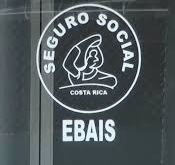Costa Rica health care system history
Let us explain a little bit about the history of the Social Security system in Costa Rica in order to better understand, what we know as “CAJA.”
The Caja Costarricense del Seguro Social was created in Costa Rica in 1942 during the administration of Dr. Rafael Angel Calderón Guardia. The CCSS arose at a time of great public health difficulties in Costa Rica. With its creation, it achieved a system that unified efforts in a tripartite way by including contributions from the State, from workers of the time who advocated for better social conditions, and from employers. It this way, it created a social policy of solidarity, that would provide improvements to the social systems and supported the family.
The CAJA is an autonomous institution of the Costa Rican state, which means that it is independent, both administratively and financially, allowing it to be more efficient in the management and disposal of its resources.
This insurance is mandatory and covers workers and their families. There is also a welfare program which is aimed to assist those who live in poverty or are disabled.
The CAJA is responsible for the actions that are carried out in the areas of disease prevention, medical treatment, as well as the coordination of a large system of hospitals and clinics throughout the country. This system has around 29 hospitals and more than 1000 Ebais (local medical clinics).
This is basically how this system works: Costa Rican employees must be registered with the CAJA, which is one of the largest responsibilities of employers when initiating the employer-employee relationship. This coverage also extends to the dependents of the insured person through the family benefit. Thus, all the health services that a Costa Rican needs, from medical control programs, prenatal care, hospital care, surgeries, medical care in case of accidents, cancer treatments, and any number of other procedures, are accessible in Costa Rica, thanks to the social security and the services provided by the Costa Rican Social Security Fund.
Costa rica health care system for foreigners
However, the CAJA is not only for Costa Rican citizens. Starting in the 1990s, there was an increase in the benefits given by the CAJA to immigrants. The Costa Rican Regulations outline this coverage in Article 32 of the Immigration Ruling:
“Foreign people who receive approval of their permanent residency, temporary residency or those Special Subcategories of the Special Category requests shall, once the decision has been notified, proceed with the registration before Costa Rican Social Security Fund authorities.”
So, this means that it is a fundamental requirement to register with the CAJA once the application for residency has been approved. Once a person has obtained the resolution proving their status as resident, it is mandatory for them to register with the CAJA. You are required to sign up with the CAJA before you can be issued your DIMEX/ Cedula or residency card.
You may have asked yourself, “Why do I need CCSS insurance, if I already have my health insurance in my home country?” or “Why do I need to register with the CAJA if I have private insurance and can access Hospital CIMA or Hospital Clínica Bíblica if something were to happen?”
You may be asking these questions particularly if you have heard many stories about the often times long waiting times, high demand, and the difficulty of prompt and optimal care, which can certainly make anyone doubt the importance of being registered with the CAJA.
However, rest assured, you will need to register with the CAJA regardless of your feelings about its effectiveness. This requirement has been established and is a part of the obligation of Costa Rican law, as we already mentioned above, and is one of the requirements to be a resident in the country. The need for everyone to contribute to the social security system of the country.
The fact that Costa Rica´s best professionals are trained (and often in USA medical schools) and provide services to the CAJA. While recognizing and understanding its vast areas of improvement, CAJA is usually the one that deals with those situations of greater complexity. Many Ticos, regardless of income, use the CAJA for matters such as cancer treatment or major accidents. On many occasions, private hospitals will refer the patient to the CAJA system.
Our personal experience with the CAJA system, on the southern zone of Costa Rica, has been really good! We have received amazing, fast treatment for emergencies, regular checkups, etc. Waiting lines are not bad, especially if you time it correctly! Certainly no worse than what we experienced in Canada! A lot of the long ups and delays seem to be happening more in the central valley and San Jose area, than here in the southern zone.
We, personally, make choices of when we use the CAJA system, and when we may choose to use the private network… sometimes it just makes sense to use a “private” service. For example, my husband had an eye issue; we wanted to see a specialist quickly, the next week; so we choose to use a private clinic. The cost for 3 visits, and a lot of time spent with him, was about $80!
The CAJA system also covers almost all medications. When I go to emergency for an issue, I walk out, having had very professional treatment, and my bag of medications! I am also covered for my thyroid and blood pressure pills… this alone almost pays for my CAJA!
So, in conclusion, while the mandatory registration with the CAJA may seem inconvenient and dealing with the CAJA can be a bit of a cumbersome process, at the end of the day it is an additional insurance in case of an emergency, that everyone is required to register for.
Do you have a question about this article or about Costa Rica real estate? Feel free to contact us!
To subscribe to our bi-monthly, informative newsletter click here!



